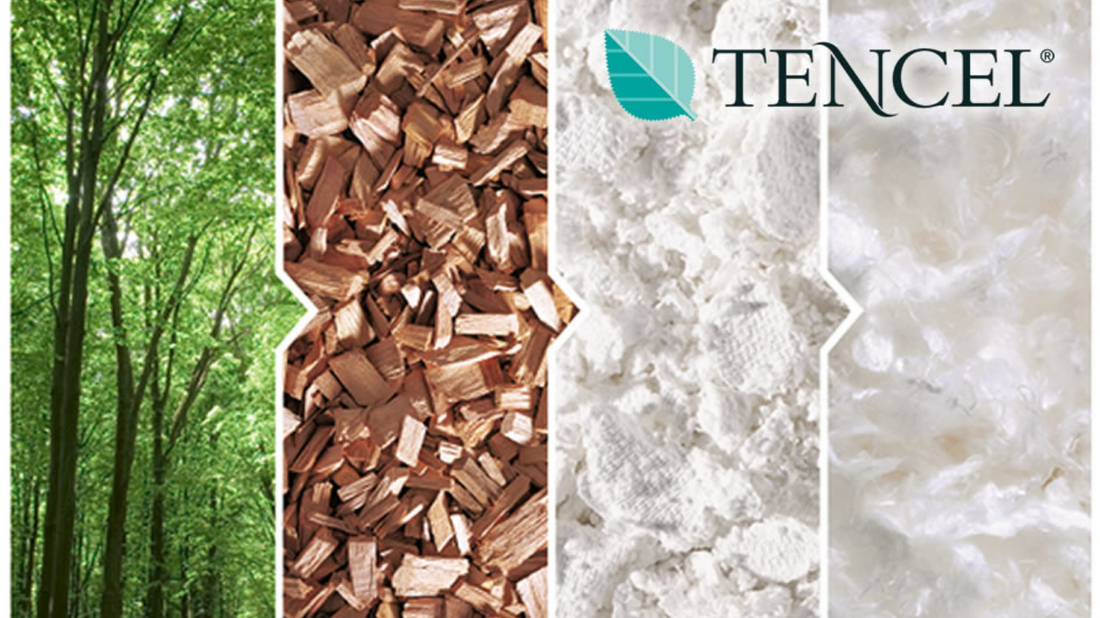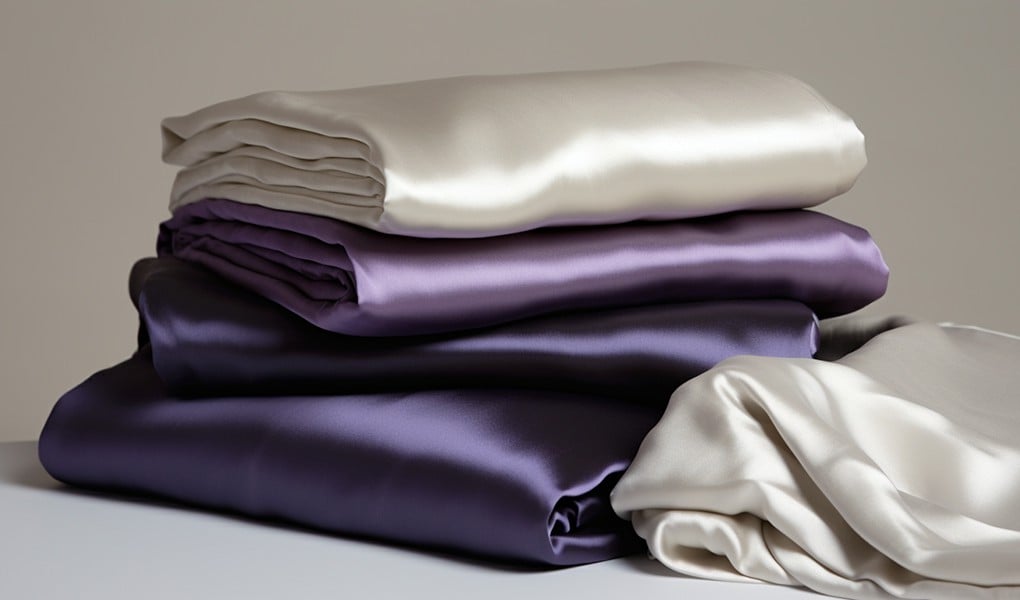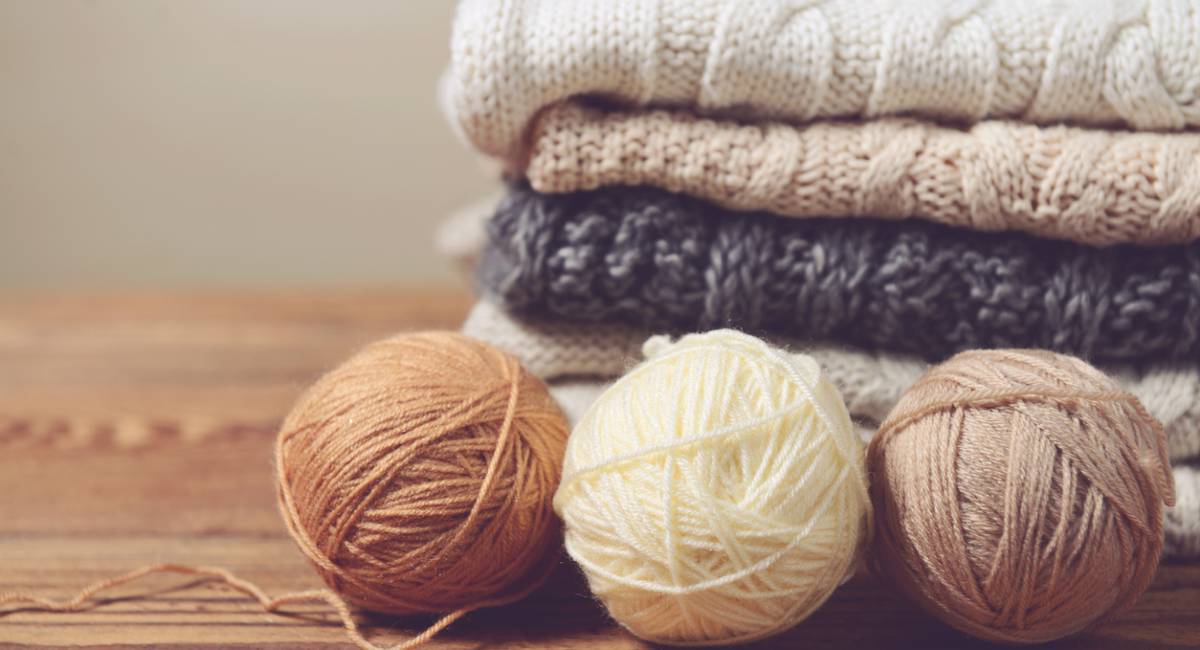T-shirts are a wardrobe staple, but not all t-shirts are created equal. The type of fabric used plays a significant role in determining the comfort, durability, and overall quality of a t-shirt.
In this blog post, we’ll explore the most common fabrics used for manufacturing t-shirts, their history, and rank each fabric on a scale of 1 to 5 (★) for key attributes such as softness, breathability, stretch, weight, long-lasting, colour fastness, pilling, price, sustainability, and wrinkle resistance.
1. Cotton

Cotton is one of the most popular natural fabrics, valued for its softness, breathability, and versatility. It is derived from the fluffy fibers surrounding the seeds of the cotton plant. Used for thousands of years, cotton is known for its ability to absorb moisture, making it highly comfortable in warm weather.
The fabric is soft against the skin and hypoallergenic, making it ideal for people with sensitive skin. However, pure cotton is prone to wrinkling and shrinking unless blended with other fibers. It is also moderately durable but may fade over time. While cotton is biodegradable, its production requires significant water and pesticides, impacting sustainability efforts.
Softness ★★★★★ Extremely soft and comfortable.
Breathability ★★★★★ Highly breathable, ideal for warm weather.
Stretch ★★☆☆☆ Minimal stretch unless blended with elastane.
Weight ★★★☆☆ Medium weight, suitable for all seasons.
Long-lasting ★★★★☆ Durable but may shrink or fade over time.
Colour Fastness ★★★☆☆ Moderate; colours may fade after repeated washes.
Pilling ★★★☆☆ May pill after extended use.
Price ★★☆☆☆ Affordable and widely available.
Sustainability ★★★☆☆ Natural but water-intensive to produce.
Wrinkle Resistance ★★☆☆☆ Prone to wrinkling unless treated.
2. Supima Cotton

Supima cotton is a premium type of cotton grown exclusively in the United States, known for its extra-long staple fibers. These longer fibers make Supima cotton softer, stronger, and more resistant to pilling than regular cotton. It has a silky texture and holds color well, reducing fading over time. Supima cotton is also more durable, allowing garments to last longer with frequent use.
Due to its high quality, Supima cotton is more expensive than regular cotton. Although it requires a significant amount of water for cultivation, its durability and longevity make it a better choice for sustainable luxury fashion.
Softness ★★★★★ Exceptionally soft and luxurious.
Breathability ★★★★★ Highly breathable, ideal for warm weather.
Stretch ★★★★☆ Slightly more stretch than regular cotton.
Weight ★★★☆☆ Medium weight, suitable for all seasons.
Long-lasting ★★★★★ More durable than regular cotton.
Colour Fastness ★★★★☆ Better colour retention than regular cotton.
Pilling ★★★★☆ Less prone to pilling than regular cotton.
Price ★★★★☆ More expensive due to premium quality.
Sustainability ★★★★☆ Natural but still water-intensive.
Wrinkle Resistance ★★★☆☆ Some wrinkling unless treated.
3. Polyester

Polyester is a synthetic fabric made from petroleum-based fibers, widely used in clothing due to its durability, wrinkle resistance, and affordability. Developed in the mid-20th century, polyester became popular for its ability to retain shape and resist shrinking, stretching, and wrinkles. The fabric is lightweight, smooth, and slightly shiny, with a tight weave that enhances its strength.
Polyester is often blended with natural fibers like cotton to improve softness and breathability while maintaining durability. However, it is less breathable than natural fabrics, which can make it feel warm in hot climates. Despite its advantages, polyester is not environmentally friendly, as it is derived from non-renewable resources and sheds microplastics into the environment.
Softness ★★☆☆☆ Less soft compared to natural fibres.
Breathability ★★☆☆☆ Less breathable, can trap heat.
Stretch ★★★★☆ Good stretch and recovery.
Weight ★★☆☆☆ Lightweight but can feel clingy.
Long-lasting ★★★★★ Highly durable and resistant to wear.
Colour Fastness ★★★★★ Excellent; retains colour well.
Pilling ★★★★☆ Resists pilling better than natural fibres.
Price ★★☆☆☆ Inexpensive to produce.
Sustainability ★☆☆☆☆ Not eco-friendly; derived from petroleum.
Wrinkle Resistance ★★★★★ Highly wrinkle-resistant.
4. Cotton-Polyester Blend

A cotton-polyester blend combines the softness and breathability of cotton with the durability and wrinkle resistance of polyester. This fabric is widely used in everyday clothing, including t-shirts and athletic wear, because it balances comfort with performance. The addition of polyester reduces the shrinkage and wrinkling common in pure cotton, making the fabric easier to care for. It also enhances durability, making garments last longer.
However, since polyester is less breathable than cotton, the blend may not be as cool and airy as 100% cotton. While blending synthetic and natural fibers improves functionality, it also makes recycling and biodegradation more difficult.
Softness ★★★★☆ Soft but slightly less than pure cotton.
Breathability ★★★★☆ More breathable than pure polyester.
Stretch ★★★☆☆ Moderate stretch, depending on the blend.
Weight ★★★☆☆ Balanced weight for versatility.
Long-lasting ★★★★★ More durable than pure cotton.
Colour Fastness ★★★★☆ Better than cotton but not as good as polyester.
Pilling ★★★★☆ Less prone to pilling than pure cotton.
Price ★★☆☆☆ Affordable and cost-effective.
Sustainability ★★☆☆☆ Better than polyester but still not ideal.
Wrinkle Resistance ★★★★☆ Resists wrinkling better than pure cotton.
5. Linen

Linen is a natural fabric made from flax fibers, known for its exceptional breathability and lightweight feel. It has been used for centuries, dating back to ancient Egypt. Linen is highly absorbent and dries quickly, making it ideal for warm climates and summer clothing.
However, it tends to wrinkle easily and can feel rough initially, though it softens with each wash. Linen is stronger and more durable than cotton, making it a long-lasting fabric. It is also considered environmentally friendly since flax requires less water and pesticides than cotton. Its texture and airy feel make it a luxury choice for casual and formal wear.
Softness ★★★☆☆ Softens over time but can feel rough initially.
Breathability ★★★★★ Extremely breathable, perfect for hot weather.
Stretch ★☆☆☆☆ Very little stretch.
Weight ★★☆☆☆ Lightweight and airy.
Long-lasting ★★★★☆ Strong and durable but prone to fraying.
Colour Fastness ★★★☆☆ Moderate; may fade with sun exposure.
Pilling ★★★★★ Resists pilling well.
Price ★★★★☆ More expensive due to labour-intensive production.
Sustainability ★★★★★ Highly sustainable; requires less water than cotton.
Wrinkle Resistance ★☆☆☆☆ Prone to wrinkling.
6. Bamboo

Bamboo fabric is an eco-friendly textile made from bamboo pulp, offering a soft and silky feel similar to cashmere. It is naturally breathable, moisture-wicking, and antibacterial, making it a great choice for activewear and everyday clothing. Bamboo fabric is also hypoallergenic, making it ideal for sensitive skin. However, not all bamboo fabrics are created sustainably—many are produced using chemical-intensive rayon processes.
Bamboo itself is a highly renewable resource, but the processing methods can impact its environmental footprint. The best options for sustainable bamboo fabric are mechanically processed varieties, such as bamboo linen, which retain their eco-friendly properties.
Softness ★★★★★ Exceptionally soft, similar to silk.
Breathability ★★★★★ Highly breathable and moisture-wicking.
Stretch ★★★☆☆ Moderate stretch.
Weight ★★☆☆☆ Lightweight and comfortable.
Long-lasting ★★★☆☆ Durable but may lose shape over time.
Colour Fastness ★★★☆☆ Moderate; colours may fade.
Pilling ★★★☆☆ May pill after extended use.
Price ★★★★☆ More expensive due to sustainable production.
Sustainability ★★★★★ Highly sustainable and biodegradable.
Wrinkle Resistance ★★★☆☆ Resists wrinkling moderately well.
7. Hemp

Hemp is a highly durable and sustainable natural fabric derived from the stalks of the hemp plant. It is one of the strongest natural fibers, resistant to wear and tear, and gets softer with each wash. Hemp fabric is breathable, moisture-wicking, and naturally resistant to mold and UV rays. It is also one of the most eco-friendly textiles, requiring minimal water and no pesticides to grow.
However, hemp has a slightly rough texture initially, though it softens over time. Due to its durability and sustainability, hemp is gaining popularity in ethical fashion and eco-friendly clothing brands.
Softness ★★★☆☆ Softens with wear but can feel coarse initially.
Breathability ★★★★★ Highly breathable and moisture-wicking.
Stretch ★★☆☆☆ Minimal stretch.
Weight ★★★☆☆ Medium weight, suitable for various climates.
Long-lasting ★★★★★ Extremely durable and resistant to wear.
Colour Fastness ★★★★☆ Good; retains colour well.
Pilling ★★★★★ Resists pilling exceptionally well.
Price ★★★☆☆ Moderately priced, depending on production.
Sustainability ★★★★★ Highly sustainable and eco-friendly.
Wrinkle Resistance ★★☆☆☆ Prone to wrinkling.
8. Rayon (Viscose)

Rayon, also known as viscose, is a semi-synthetic fabric made from wood pulp, designed to mimic the feel of silk, cotton, or wool. It is soft, breathable, and lightweight, making it a versatile choice for dresses, blouses, and sportswear. However, rayon is not as durable as natural fibers and may lose strength when wet.
It is also prone to shrinking and wrinkling. While rayon is derived from natural materials, its production involves heavy chemical processing, raising environmental concerns. More sustainable alternatives, like Tencel (Lyocell), are being developed to reduce the environmental impact of rayon production.
Softness ★★★★☆ Soft and smooth, similar to silk.
Breathability ★★★★☆ Breathable and comfortable.
Stretch ★★☆☆☆ Minimal stretch.
Weight ★★☆☆☆ Lightweight and airy.
Long-lasting ★★★☆☆ Less durable than natural fibres.
Colour Fastness ★★★☆☆ Moderate; colours may fade.
Pilling ★★★☆☆ May pill after extended use.
Price ★★★☆☆ Moderately priced.
Sustainability ★★☆☆☆ Not very eco-friendly due to chemical processing.
Wrinkle Resistance ★★☆☆☆ Prone to wrinkling.
9. Tencel (Lyocell)

Tencel, also known as Lyocell, is a the most sustainable fabric made from wood pulp using an eco-friendly, closed-loop production process. It is known for its silky-smooth texture, excellent breathability, and moisture-wicking properties. Tencel is more durable than rayon and resists wrinkles better. It is also biodegradable and produced with minimal environmental impact, making it one of the most sustainable textile options.
Tencel fabric is widely used in activewear, casual wear, and even luxury clothing. Its softness and versatility make it a preferred choice for those looking for an eco-friendly and high-performance alternative to conventional fabrics.
Softness ★★★★★ Extremely soft and smooth.
Breathability ★★★★★ Highly breathable and moisture-wicking.
Stretch ★★★☆☆ Moderate stretch.
Weight ★★☆☆☆ Lightweight and comfortable.
Long-lasting ★★★★☆ Durable and resistant to wear.
Colour Fastness ★★★★☆ Good; retains colour well.
Pilling ★★★★☆ Resists pilling well.
Price ★★★★☆ More expensive due to sustainable production.
Sustainability ★★★★★ Highly sustainable and eco-friendly.
Wrinkle Resistance ★★★☆☆ Resists wrinkling moderately well.
10. Silk

Silk is a luxurious natural fabric produced by silkworms spinning their cocoons. Known for its soft, smooth texture and natural sheen, silk has been a highly prized fabric for centuries. It is incredibly lightweight and breathable while offering excellent temperature regulation, keeping the wearer cool in summer and warm in winter.
Despite its elegance, silk requires delicate care, as it is prone to staining, wrinkling, and damage from sunlight and moisture. It is also one of the most expensive fabrics due to the labor-intensive production process. Although natural and biodegradable, conventional silk farming can have ethical concerns regarding animal welfare.
Softness ★★★★★ Extremely soft and luxurious.
Breathability ★★★★☆ Breathable but can trap heat.
Stretch ★★☆☆☆ Minimal stretch.
Weight ★★☆☆☆ Lightweight and delicate.
Long-lasting ★★★☆☆ Durable but requires careful handling.
Colour Fastness ★★★☆☆ Moderate; colours may fade.
Pilling ★★★★☆ Resists pilling well.
Price ★★★★★ Expensive due to labour-intensive production.
Sustainability ★★★☆☆ Natural but not very eco-friendly.
Wrinkle Resistance ★★☆☆☆ Prone to wrinkling.
11. Wool

Wool is a natural fiber obtained from sheep and other animals like alpacas and goats (cashmere and mohair). It is known for its insulating properties, making it an excellent choice for winter clothing. Wool is breathable and moisture-wicking, helping regulate body temperature. It is also naturally elastic and resistant to wrinkles, maintaining its shape well over time.
However, wool can feel itchy for some people, and it requires special care when washing to prevent shrinkage. While wool is a renewable resource, some production methods raise ethical and environmental concerns, such as overgrazing and animal welfare issues in large-scale farming.
Softness ★★★☆☆ Can be soft but may feel itchy.
Breathability ★★★★☆ Breathable and moisture-wicking.
Stretch ★★★☆☆ Moderate stretch.
Weight ★★★★☆ Heavier, suitable for cold weather.
Long-lasting ★★★★★ Extremely durable and resistant to wear.
Colour Fastness ★★★★☆ Good; retains colour well.
Pilling ★★★☆☆ May pill after extended use.
Price ★★★★☆ More expensive due to labour-intensive production.
Sustainability ★★★★☆ Natural and biodegradable.
Wrinkle Resistance ★★★★☆ Resists wrinkling well.
12. Recycled Polyester

Recycled polyester (rPET) is an eco-friendly alternative to traditional polyester, made from recycled plastic bottles and post-consumer waste. It offers the same durability, wrinkle resistance, and color retention as virgin polyester but with a significantly lower environmental impact. By repurposing plastic waste, recycled polyester helps reduce landfill and ocean pollution.
However, it still sheds microplastics during washing, contributing to environmental issues. Despite this, rPET is becoming a popular choice for sustainable fashion brands, especially in activewear and outerwear. Choosing recycled polyester over virgin polyester is a step towards reducing plastic waste and promoting circular fashion.
Softness ★★☆☆☆ Less soft compared to natural fibres.
Breathability ★★☆☆☆ Less breathable, can trap heat.
Stretch ★★★★☆ Good stretch and recovery.
Weight ★★☆☆☆ Lightweight but can feel clingy.
Long-lasting ★★★★★ Highly durable and resistant to wear.
Colour Fastness ★★★★★ Excellent; retains colour well.
Pilling ★★★★☆ Resists pilling better than natural fibres.
Price ★★★☆☆ Moderately priced.
Sustainability ★★★★☆ Eco-friendly due to recycling process.
Wrinkle Resistance ★★★★★ Highly wrinkle-resistant.





